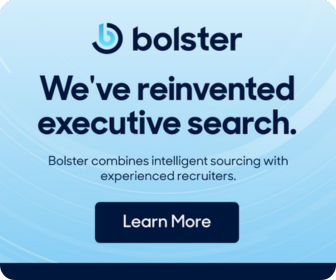
It’s in your organization’s best interest to have a variety of perspectives on your leadership team. Research shows that organizations with diverse leadership grow faster, are more adaptable, have higher stock prices, and report greater employee satisfaction.
It isn’t enough just to say you want a more diverse leadership team. If you don’t take steps to ensure your organization is inclusive, it won’t magically become that way.
Where To Start
Ideally, you’ll start with a commitment from the CEO. If the leadership team is openly committed to building a diverse and inclusive organization, you have a much better chance of succeeding. Buy-in from the top will make it easier to set goals, change processes if needed, and maintain focus.
Some organizations set specific goals around diversity, so they can measure and track progress over time. Whatever your team chooses to do, it’s important to make time to check in periodically. Are you sticking to your commitments? Are you seeing improvements?
Building an inclusive organization isn’t a process you can set and forget. Returning to your goals and reassessing results is a key part of the process.
The Hiring Process
There are, of course, a variety of actions you can take within your company to build an inclusive culture, but today, we’re focusing on how you bring leaders into your organization.
Once you have buy-in from the leadership team, it’s time to review your hiring process from the beginning. The goal is to uproot any biases that may have been present in your hiring methods, as well as to optimize the process so your team can find the right leaders and continue to grow.
The Job Description
Get clear on what you’re looking for. A good job description won’t encompass the entire role in the long term. It’s not a laundry list of tasks, responsibilities, and required experience.
Paint a clear picture of how this role will contribute to the company’s needs, and include the most important requirements and expectations. Women and other traditionally underrepresented leaders will often avoid applying to jobs where they don’t fit all of the qualifications, which means a job description filled with unnecessary details or nonessential items is less likely to result in a diverse pool of applicants.
Make sure your job descriptions have been reviewed to remove bias, since some words and phrases are likely to deter potential applicants. There are online tools you can use to help ensure that your language isn’t unintentionally biased.
Learn more about writing an effective executive job description.
The Sourcing Process
Turning to familiar faces is a common tactic when hiring, and while personal networks are a valuable resource, they’re often relatively homogenous. If your goal is to promote diversity throughout the hiring process, you’ll need to act with purpose.
Recruiting from a variety of talent pools is a good way to reach a larger group of candidates. Open your search to professional organizations, alumni associations, and other diverse networks. Not sure where to start? Bolster can help.
The Interview
Before you start the interview process, take a look at the interview team. They should be able to offer candidates a multitude of perspectives on your company. An interview team made up of employees from a variety of positions can also help both you and the candidate get an idea of how they would fit into the organization as a whole. Does the team understand company values and represent a diverse group of leaders? Hopefully, the answer is yes.
The Candidate
When it’s time to choose your candidate, take another look at the job description. Some of your candidates may not have held an executive-level title, but they might be capable of excelling in your open role. Instead of looking for someone who has already held an equivalent role or title, focus on finding a candidate with the skills, vision, and drive to grow alongside your organization.
It takes patience to run a successful executive search. A focus on impactful skills, cultural fit, and competency over specific experience will highlight the candidates who can take your business to the next level.
When you have buy-in from leadership, take the time to examine your organizational biases, and conduct your hiring process with intention, you’re much more likely to find and attract historically underrepresented executives.
